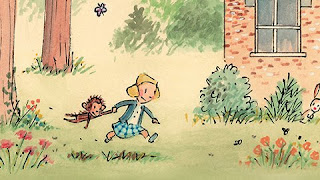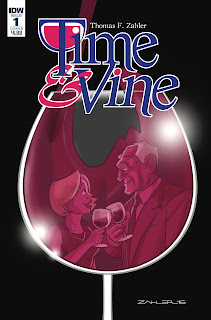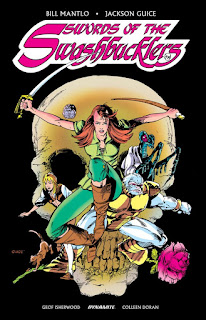Thursday, October 19, 2017
Wuerker talks to Blitt
'Wry Titters' in the Age of Trump
How New Yorker cover artist Barry Blitt became the master of the political moment.
http://www.politico.com/magazine/story/2017/10/19/barry-blitt-cartoons-interview-new-yorker-215719Thom Zahler – An Interview with a BCC mainstay
 |
| Zahler at BCC in 2014 |
 You've got a very 'cartoony'
style (which I love), but has it worked for or against you in getting jobs? Do
you have a more "realistic" style?
You've got a very 'cartoony'
style (which I love), but has it worked for or against you in getting jobs? Do
you have a more "realistic" style?Warning Label is partly about a woman board game designer - are you a gamer?
I play games, and wish I had the time and opportunity to play more, but I’m not hard core. Also, I don’t really play console games at all. It’s how I get things done.
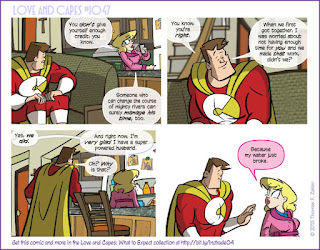 I would take some art history classes. I wish that I had the
opportunity to learn more about classic artists. I might have tried moving out
to LA to pursue more writing opportunities.
I would take some art history classes. I wish that I had the
opportunity to learn more about classic artists. I might have tried moving out
to LA to pursue more writing opportunities. | |
| Warning Label webcomic |
updated 10/24/2017 with gaming question
Kramer on sewage and other waste
Oct 26: Jason Reynolds at Politics and Prose
Jason Reynolds - Long Way Down — in the Children & Teens Dept. **FOR TEENS AND ADULTS
Fifteen-year-old Will stands in his building's elevator, a gun tucked into his waistband, heart thudding with grief and fear. When he reaches the lobby, he knows what he has to do: shoot the man who killed his older brother. But as the elevator descends from the seventh floor to the first, something unbelievable happens that forces Will to question everything he's been taught. The events unfold over the course of a single minute, revealed in verse. Long Way Down will ignite an important conversation about gang violence and the rigid "rules" of masculinity. Ages 14 and up.
This is part of the Can We Talk About This event series
Click here for more information.
Wednesday, October 18, 2017
Oct. 20: MASL comics panel
Oct. 19: Cohen @ Heurich House Museum
PR: 10,000 Sci-Fi items to be auctioned Saturday Oct 21 in Falls Church VA - The Brammer Collection
FOR INFORMATION: Catherine Payling, Director Waverly Rare Books at Quinn's Auction Galleries; 703-532-5632 ext. 575 catherine.payling@
AUCTION CATALOGUE:
http://quinnsauction.hibid.
EARLY SCI FI COLLECTION GOES TO AUCTION OCT 21
The Brammer Family Collection of more than 10,000 books, comics, ephemera
to be sold at Quinn's Auction Galleries
A treasure trove assemblage of early science fiction will be sold October 21 when the Fred and Eric Brammer Family Collection of books, comics and ephemera goes to auction at Quinn's Auction Galleries & Waverly Rare Books in Falls Church, Virginia.
An encapsulation of the collections of father and son duo, Fred and Eric Brammer, of McLean, VA, the sale represents more than six decades of purposeful collecting starting with items from early science fiction and fantasy conventions in the 1930s. Fred, a member of the First Fandom, a group of lovers of the sci-fi and horror genres, amassed a collection of pulp fiction, comic books, ephemera, classic novels, short stories and cult hits starting before the Second World War As he traveled the globe attending sci-fi conventions, Fred often purchased the newest works by burgeoning authors. Passing along his love of weird fiction to his son, Eric, the Brammer family eventually became staples at conventions sharing their passion for the genre and supporting then little known authors and ventures such as Star Trek.
After Fred's death Eric, a filmmaker and photographer, decided to bring his father's collection to auction for the purpose of using the proceeds to create a documentary examining the Brammer family story in the world of science fiction. His film will also show the influence and importance the members of the First Fandom had on contemporary science fiction and popular culture fandoms.
Highlights of the Quinn's sale will include a first edition of Foundation Series by Isaac Asimov, Fahrenheit 451 by Ray Bradbury and H. P. Lovecraft's The Outsider and Others. In addition to a series of rare and desirable first editions, the Brammer Family Collection boasts hundreds of golden and silver age comic books including Batman No. 181 with the first appearance of Poison Ivy; Captain America, No. 100, and the first appearance of Captain America in his own series; Fantastic Four No. 48, "The Coming of Galactus," and The Amazing Spider-Man No. 129, the first appearance of the Punisher, among many other important and early comics.
The auction will take place Saturday, October 21 at 11 am at Quinn's Auction Galleries, 360 South Washington Street, Falls Church, Virginia. www.QuinnsAuction.com
FOR INFORMATION: Catherine Payling, Director Waverly Rare Books at Quinn's Auction Galleries; 703-532-5632 ext. 575 catherine.payling@
Ann Telnaes on covering Trump
The Trump Bump
How covering Trump has changed the careers of some of journalism's hottest names
By Meg Dalton, Karen K. Ho, and Pete Vernon, CJR
Fall 2017Comic Riffs talks to Brian Fies about his losses to California fires
Santa Rosa cartoonist draws 'a dispatch from the front' after his house burns down
Wall Street Journal talks to Tom King about Batman...
Batman Shows His Softer Side
The Dark Knight is evolving, with writer Tom King seeing Batman as 'sort of a machine that turns pain into hope.'
By Michael Rapoport
Updated Oct. 16, 2017
Appeared in the October 17, 2017, print edition as 'batman takes on a more human dimension.'
https://www.wsj.com/articles/batman-shows-his-softer-side-1508168307#comments_sector
Tuesday, October 17, 2017
Big Planet's Jared Smith on Slate podcast...
...although I can't figure out how to listen to these on a computer...
How Does a Comic Book Store Owner Work?
Jared Smith talks about the weekly grind of bringing comics to readers.

Photo illustration by Slate. Photo by Jacob Brogan.
Over the past six episodes of Working, we've been talking with writers and artists about how comics get made. In this episode, which you can listen to via the player above, we're looking at how they make their way into readers' hands.
This week, we sat down with Jared Smith, one of the co-owners of Big Planet Comics, a chain of four shops in the Washington area. Smith discusses the ups and downs of a job that finds him reading comics almost every day. Along the way, he leads us through a week in the life of the comics shop, from the labor that goes into unpacking boxes of new books every Tuesday to the daily effort of building relationships with customers. He also talks Big Planet's publishing partnership with Retrofit Comics, a project that finds him serving an editorial role.
Then, in a Slate Plus extra, Smith talks about the comics he eagerly reads every month. If you're a member, enjoy bonus segments and interview transcripts from Working, plus other great podcast exclusives. Start your two-week free trial at Slate.com/workingplus.
Monday, October 16, 2017
SPX's 2dcloud panel
SPX 2017 Panel - Good Minnesotans and Mirror Mirrors: Ten Years of 2dcloud
Shannon Gallant talks about leaving G.I. Joe for… G.I. Joe
 | |
| Gallant inked by Earskine |
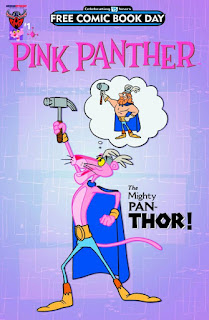 You’ve also done work for American Mythology in Baltimore
lately?
You’ve also done work for American Mythology in Baltimore
lately? | |
| Shadows drawn and inked by Gallant |

